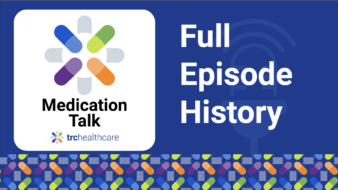
This month’s Insights Newsletter covers the latest practice-changing pharmacy updates, emerging trends, and popular natural medicine topics and resources.
Insights Newsletter | February 2024
Optimize Anticoagulation for Patients With Atrial Fib
Anticoagulation continues to be a mainstay of stroke prevention in patients with atrial fibrillation, but there are many caveats to consider when choosing anticoagulants. Our Letter articles lead clinicians through a stepwise process that starts with identifying stroke risk factors in patients with atrial fibrillation to determine who needs to be anticoagulated. We compare direct oral anticoagulants to warfarin and highlight when to consider one over the other. We also share considerations such as drug interactions, adherence, and cost. Our resource, A-Fib: Focus on Pharmacotherapy, also addresses the latest data on rate control and rhythm control. It also compares various antiarrhythmics used for atrial fibrillation. Read More
Community Topic: Help Navigate Common Hurdles With GLP-1 Agonists
Buzz continues for GLP-1 agonists (tirzepatide, semaglutide, etc.) due to their roles in weight loss, but there can be hurdles to their use. Our Letter articles summarize hurdles for GLP-1 agonists, such as shortages and adverse effects. We guide clinicians on strategies for switching between GLP-1 agonists. In addition, we address common adverse effects and how to educate patients to minimize these effects, especially GI issues. Our resources, Drugs for Type 2 Diabetes and Weight Loss Products, take a deeper dive into these agents and their roles in diabetes and weight loss. Read More
Hospital Pharmacy: Choose the Most Appropriate Syringe
Using the correct syringe is key when prepping meds to optimize accuracy and safety. Our Letter articles identifies concerns when a syringe is too big or too small for drawing up a particular dose. For example, the dose should be at least 20%, but not more than 75% to 80% of the total syringe volume. We also provide guidance for fraction doses and use of specific syringe types. Our technician tutorial resource, Injectable Meds: Beyond Sterile Prep, answers more safety questions for technicians, such as dispensing and handling injectable medications. Read More
Natural Medicines in Cancer Care: Focus on Interactions
A recent survey found that a majority of cancer patients use some form of integrative medicine, but over a quarter of these patients don’t tell their oncologist about it. Our NatMed article covers how to proactively discuss dietary supplements and integrative therapies with patients. Avoiding dangerous interactions and ensuring safe use of these therapies is crucial for all patients, but especially in a cancer setting. Read More
Other Covered Topics
Find out how to keep track of the hundreds of new pharmacy laws that are passing during this year’s legislative session and listen to the latest Medication Talk podcast. Read More
Insights Newsletter | February 2024
TRC Healthcare News & Resources

Insights Newsletter December 2023: Emerging Trends for Clinical Leadership

Insights Newsletter November 2023: Emerging Trends for Clinical Leadership

9 Essentials of Writing Your Pharmacy’s Policies and Procedures Manual

